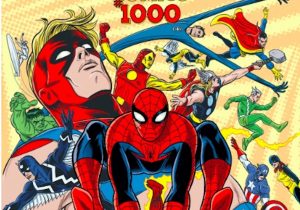Considerations and Questions when Using Graphic Novels in the Classroom
by Ian Esquivel
How knowledgeable am I as a teacher on the subject of comics? What do I need to know to be able to teach students effectively; what skills would be required for me to facilitate the practical application of that knowledge? How do I acquire that knowledge and those skills?
Do students have any prior knowledge of comics? Do they know how to read them?
How do comics use images/icons and words to tell stories?
> What are the elements of storytelling?
> What similarities/differences are there in word-based and image-based narratives?
> What are the codes and conventions (techniques) used to tell stories in prose?
> What are the codes and conventions used to tell stories in comics?
To what extent do the images support the words, and vice versa?
> Is there a balance between the images and words? Or some other pattern of use?
> If you took away the words, would the story still be evident?
> If you took away the images, would the story still be evident?
To what extent is the story framed/shaped by the “packaging”?
To what extent does the story rely on the reader’s understanding/knowledge of other texts?
What values and beliefs are evident or stated in the story? Implied? How can one tell?
What assumptions are made by the writer/artist about the reader?
> Ability, skill, knowledge?
> Values, beliefs, attitudes?
After reading a few ages, do students want to know more about the story? Do I? Why or why not?
What questions do students (and I) have about the comic? Imagine, for example, that one could ask the writer to explain something that was unclear or confusing, or bothersome? Or if one could ask the writer why s/he included this or that element, or what the most challenging aspect of creating the comic was, etc?
What do students (and I) think is the purpose of this comic? Why do they/I think that?
Who is the intended audience? How can one tell?
How difficult is it to read and understand this story? Consider the language (vocabulary, phrasing, etc.), the arrangement of elements such as the images, icons and dialogue, the style of illustration, the sequencing, etc.
> What does it means to be able to “read and understand” a story?
What would be the preferred interpretation of this comic, with respect to a) theme(s) or b) main character(s)? An oppositional and/or subversive interpretation?
What aspects of the comic’s production can one discern? What else might one want to know about how it was produced?
As a teacher, how might I use this type of text to encourage a) reading b) thoughtful literacy?
What are the pros and cons of using comics in the classroom?
**
Sample Unit/Lesson Plan: Teaching Through and About Comics and Graphic Novels
Introduction to the comic/graphic novel as a text for study
Questions for Whole Class Discussion / Brainstorming the Answers
* What do the terms ‘comic’ and ‘graphic novel’? mean? (Denotation)
* What associations do students make with these terms? (Connotation)
* What does the term ‘genre’ mean?
* Discuss genres such as Superhero, Fantasy, Adventure, Romance, Autobiography, etc.
* What is Manga?
* Why would a teacher want to use a comic in the classroom? (See Rationale)
* Who might think that was odd or inappropriate? Why?
Direct Instruction
* Define the terms ‘narration’ and ‘narrative’, and identify/describe key elements: plot,
setting, character, theme, narrative structure. Discuss/define ‘archetype’ and ‘myth’.
* Identify and describe key techniques of style: use of literal and figurative imagery,
diction, dramatic irony, foreshadowing, tone, etc.
* Identify and describe features of the comic such as the prologue/epilogue, the
‘voice over’, the thought/dialogue bubble, the panel/frame, etc.
* Identify and describe key techniques of visual style (codes and conventions) such as the
use of lines to establish motion; shading to suggest lighting and mood; fonts, type size
and bold/italics to imply tone/volume; facial expressions and icons to convey emotions;
cross-hatching to represent texture; colour and/or black and white ink to focus or
emphasize; curves/angles to represent gender, etc.
Engagement with the specific text: before, during and after reading
– access prior knowledge and experience
– examine the front cover and ‘deconstruct’ it
– in-class silent reading for 15 – 20 minutes or so, to allow students to get a sense of the story, etc
– ask students questions about their engagement with the text (whole group):
* Do they want to read on? Why or why not?
* What questions do they have about the story so far?
* What predictions can they make, based on what has occurred?
* Does the text relate to/remind them of any aspect(s) of their own life; of other texts; of
larger issues, conflicts, situations in the world, etc?
– more reading, possibly out loud or reciprocal, or guided by the teacher in small groups
– initial examination of stylistic devices and technique such as diction, figurative and literal
imagery, tone, etc, through skimming, scanning — in pairs/teams
– assign reading for completion of text — use class time as well as homework time
– guide the students’ reading comprehension through the use of questions that will lead to an
analysis of content, structure and style (what was taught during the direct instruction). The
students should work individually and in pairs or small groups to report their responses. They
should summarize the content of the comic as well as investigate in detail its content, style
and structure. i.e. They should be encouraged to learn about comics as well as through them.
* What are the narrative elements? Consider both the visual and the textual narrative.
* Are there any archetypes being used? What is their purpose and effect?
* What devices and techniques of style (codes and conventions) are being used?
* Is this comic an effective use of the form? (i.e. Evaluate it.)
* What issues of representation does it bring up?
– assign a task that will help students to synthesizing and analyze, e.g. a review, comparison
More Key Questions
* How do comics use symbolism to create meaning?
* To what extent do the images support the words, and vice versa?
> Is there a balance between the images and words? Or some other pattern of use?
> If you took away the words, would the story still be evident?
> If you took away the images, would the story still be evident?
* To what extent is the story framed/shaped by the “packaging” (front/back covers, insets)?
* To what extent does the story rely on the reader’s understanding/knowledge of other texts?
* What values and beliefs are evident or stated in the story? Implied? How can one tell?
* What assumptions are made by the writer/artist about the reader?
> Ability, skill, knowledge, values, beliefs, attitudes?
Research Assignment
– introduce a research component. For example, The History of Comics / Graphic Novels, Depictions
of Women/Minorities in Comics, The Comic Book Code, Comic Book Adaptations, Artists Who Have
Made A Difference. Use examples, such as Comic Book Confidential
– teach or review how to prepare a Research Report, including the use of citation
– use direct instruction to show students how to use the Internet
– introduce students to the library’s book collection
– have students report to the class as well as hand in a written report — students should create a
collage, brochure or poster, etc., that pertains to their report
Extensions/Creative Projects (Media Production)
– role plays, dialogues and monologues
– create an original story for a comic
– create an original comic (possible working with a partner)
– extend an existing comic by creating a prequel, parallel narrative, or sequel
– write a review, editorial, literary critique, etc.
– create an adaptation: comic to other medium, other medium to comic
– write a news story/magazine article
– create a documentary or PowerPoint presentation about comics
– create a PSA about comics
– interview a comic book artist, and/or arrange for her/him to come into class
– write a literary essay based on your interpretation of key themes in a graphic novel
**
This Lesson Plan/Outline was written by Ian Esquivel, Instructional Leader – English/Literacy, Toronto District School Board, Toronto, Ontario, Canada. It is suitable for elementary and secondary classrooms.




